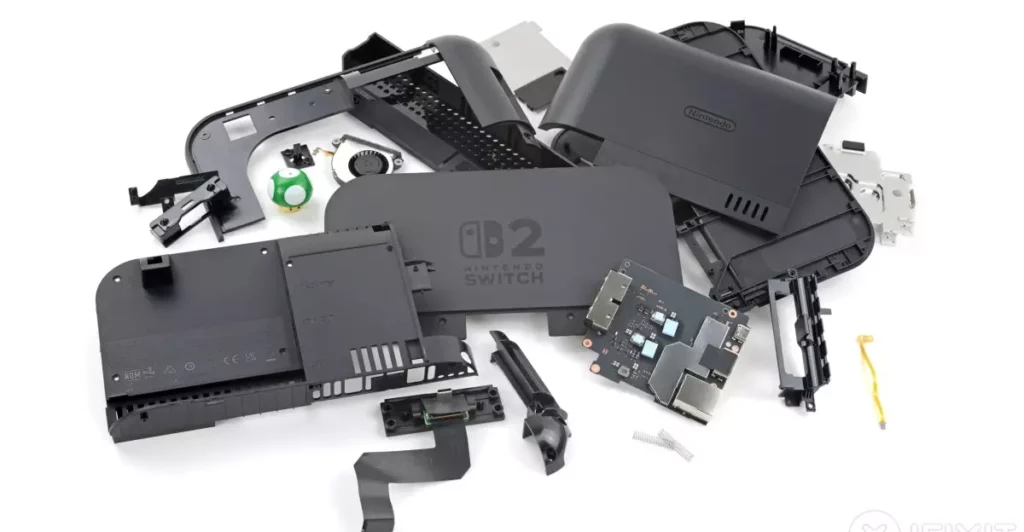The gaming community erupted in excitement when the Nintendo Switch 2 was announced, marking what many considered the dawn of a new era in gaming. However, beneath the façade of sleek design and enhanced performance lies a troubling reality that may deter consumers from making this investment. A teardown by iFixit unveiled alarming findings regarding the console’s repairability, revealing a troubling shift in Nintendo’s priorities. For a company that has built a legacy on creating beloved and durable gaming products, the Switch 2’s design choices suggest a concerning trend away from sustainability and transparency.
The Dismal Repairability Score
The crux of the problem begins with iFixit’s repairability score, which plummeted from an already lackluster 4 out of 10 for the original Switch to a staggering 3 out of 10 for the Switch 2. This drop signals a worrying transition in Nintendo’s design philosophy. A score that low is not merely a bad review; it raises doubts about whether consumers can fix their devices without incurring significant costs. In an age when DIY repairs can extend the life of products and minimize electronic waste, Nintendo’s apparent strategy feels like a slap in the face to environmentally conscious consumers and repair advocates alike.
This shift towards lesser repairability is particularly dangerous in an industry already criticized for excessive waste and planned obsolescence. With the Nintendo Switch 2, the company seems to be prioritizing aesthetic appeal and technical specifications over practicality, alienating a portion of its consumer base that values longevity and self-serviceability.
Complexities Beyond Aesthetics
What might have once been simple and accessible components are now buried behind layers of adhesives and proprietary engineering. The challenges involved in removing and replacing key elements, such as the battery and storage units, has grown so complex that it feels more like a major operation than a task a typical gamer would engage in after a few years of usage. The overwhelming need for specialized tools that are not typically found in a gamer’s arsenal is a stark reminder of how far away we’ve diverged from user-friendly designs.
The layers of adhesive not only complicate the process but introduce fragility where previously there was ease. The fragile foam insulation torn during a battery extraction serves as a cautionary tale for anyone who considers their gadgets a long-term investment.
Inaccessible Components and Consumer Disempowerment
As if the problems associated with battery access weren’t enough, the Switch 2 has taken a drastic turn by soldering crucial components like the USB-C ports directly to the mainboard. This not only makes replacement a near impossibility but symbolizes a more profound issue: a shift towards monolithic design that confines users rather than liberates them. A modular approach, which once allowed for easy upgrades and replacements, has now morphed into an industry-standard practice prioritizing seamless designs at the cost of user flexibility.
Moreover, concerns arise with components like the game card reader, which have similarly been soldered to the console, a move that seems to actively discourage repairs. This trend indicates a transparency failure and a disregard for the DIY ethos that once characterized gaming culture and consumer expectations.
The Carbon Truth: End of the Self-Repair Era?
When examining other aspects, the introduction of not just one, but three differing types of thermal paste raises eyebrows. The original Switch’s singular thermal paste was culpable for solidifying and causing overheating. The choice to mix varieties could lead to even more problems, exacerbating an already troubling reliability landscape. These decisions put gamers in a precarious position: investing time and money into a device that could easily succumb to preventable failures.
In a landscape where gaming consoles are looked at as reliable companions, the Switch 2 might squander the trust built over years. Nintendo’s continued reluctance to publish repair manuals or allow easy access to key components puts a cloud over its commitment to customer satisfaction. Long-term relationships with technological devices are now riddled with uncertainty, and gamers may find themselves shackled to manufacturers for resolutions or replacements rather than being empowered to act independently.
Are Joy-Con Issues Now More Daunting?
The new Joy-Con designs bring their own concerns, especially given the notorious joystick drift issues previously faced by gamers. With the added difficulties in undertaking repairs, one has to wonder whether Nintendo is deliberately distancing itself from those who helped propel the original Switch to its household prominence. The culture of planned obsolescence seems to persist strongly, steering consumers toward replacement rather than repair, perpetuating a cycle of dissatisfaction and environmental harm.
While the Nintendo Switch 2 dazzles with its features and innovative enhancements, its dismal repairability score serves as a reminder of a primary truth: convenience and cutting-edge technology may come at an excessive cost, primarily the right to self-repair, thereby undermining the consumer’s power and contributing to a growing culture of disposability in the gaming industry.









Leave a Reply